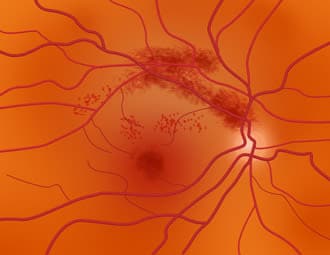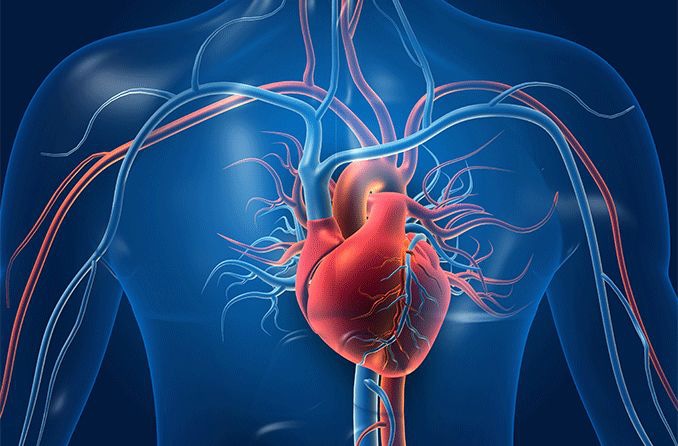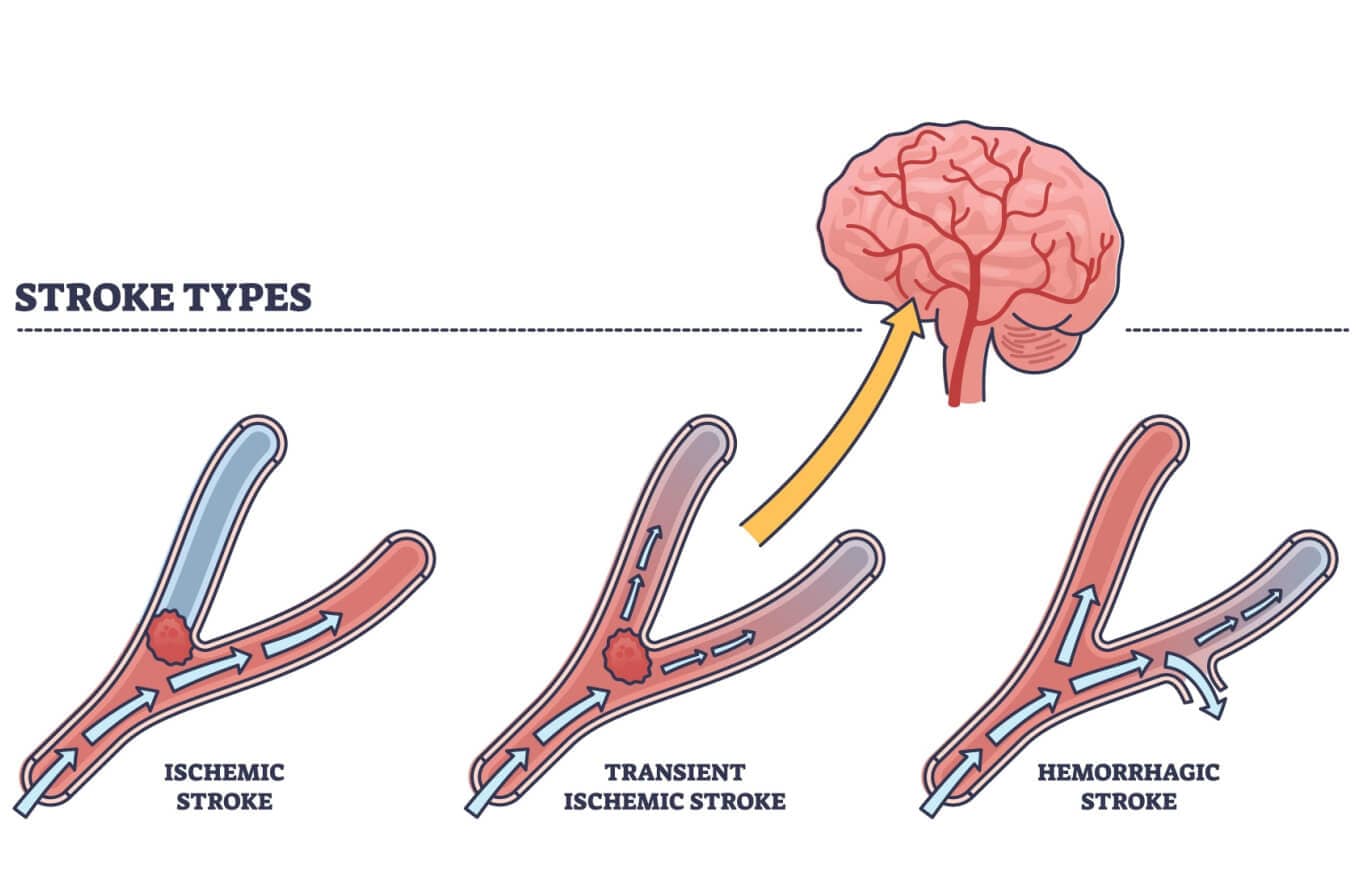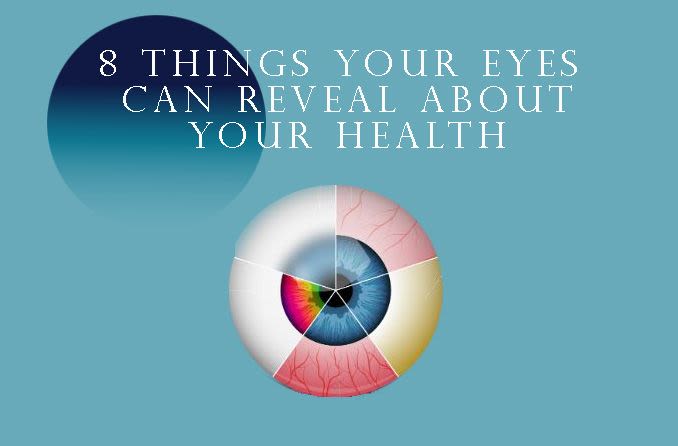How heart disease affects eye health
Your heart is the pump of your cardiovascular system, which includes arteries, veins and tiny blood vessels that supply blood, oxygen and nutrients to your body. Conditions that damage blood vessels, such as high blood pressure, high cholesterol and diabetes, harm the entire body, including the eyes.
The kidneys, liver and other organs vital to the maintenance of good health are also affected by risk factors like diabetes, hypertension (high blood pressure) and high cholesterol. Thus, damage in our cardiovascular system can lead to a cascade of ill health ranging from heart disease to eye disease.
A helpful framework for appreciating the way heart disease affects eye health is to understand how certain risk factors damage blood vessels — leading to diabetic retinopathy, age-related macular degeneration (AMD) and glaucoma.
Risk factors that cause heart disease and eye disease
1. Diabetes associated with heart disease
Diabetes increases the risk of heart disease as well as eye disease. According to the CDC, “Diabetes and heart disease often go hand in hand.” Diabetes is also the No. 1 cause of blindness in adults ages 20-74.
Diabetes damages blood vessels that supply the heart with nutrients and oxygen. It also damages the nerves that control the heart.
Damage to the cardiovascular system from diabetes can play a role in the development of eye disease. In the eyes, high blood sugar due to diabetes causes the blood vessels to become swollen and leaky, leading to an increased risk of diabetic retinopathy.
Early in the disease, there are usually no symptoms (which is why it is so important to get annual comprehensive eye exams). Fluctuating and blurry vision, floaters and eye pain can occur later in the disease. Diabetic retinopathy can lead to irreversible vision loss.
2. Hypertension (high blood pressure)
High blood pressure damages the inner lining of arteries. These damaged arteries become leaky and begin to lose their elasticity as they collect dietary fats circulating in the bloodstream. As a result, blood flow becomes limited and turbulent leading to increased risk of eye disease and heart disease.
These weakened arteries can also sometimes begin to bulge in some areas. This bulge is known as an aneurysm. If the bulge ruptures, it can cause life-threatening bleeding at the heart or sight-threatening bleeding in the eye.
High blood pressure also places stress on the organs of the body that are receiving blood flow at too high a pressure. Over time, this can result in direct injury to the kidneys and to other organs.
3. High cholesterol
Low density cholesterol tends to build up in the walls of arteries. With age, the interior of these arteries becomes narrowed by “plaques” of cholesterol. This is known as atherosclerosis, and it leads to damage to the heart and eyes.
In the heart, high levels of low density cholesterol can increase the risk of heart attack by reducing or blocking blood flow.
In the eyes, cholesterol can cause a blockage of the blood vessels that provide nutrients to the retina. This blockage, often called an occlusion, starves the cells from oxygen and glucose resulting in injury to the retina.
4. Smoking
Nearly 1 in 5 deaths in the United States are due to a preventable cause — cigarette smoking. Smoking injures every system in the body. It erodes the structure of blood vessels and, when combined with other risk factors, raises the risk of heart disease as well as eye disease.
Smoking increases the risk of developing cataracts, AMD, diabetic retinopathy, uveitis, optic nerve damage, Graves' disease and dry eye.
5. Obesity
Obesity is linked to several risk factors that lead to heart disease and eye disease:
Increased risk of diabetes
Being obese increases the risk of diabetes. Diabetes and heart disease are closely associated. Nearly three-fourths of individuals who have diabetes and are over age 65 years also have heart disease, according to the American Heart Association (AHA).
Raised blood pressure
Individuals who are obese have a higher demand for oxygen and nutrients, which is provided by an increased amount of blood. This leads to higher blood pressure in order to circulate the increased levels of blood.
Changes in cholesterol levels
Obesity actually changes the level of cholesterol in the body — lowering the levels of the good type (high-density) and raising levels of the bad type (low density).
High cholesterol, high blood pressure and increased risk of diabetes are significant reasons that obesity is a risk factor for both heart disease and eye disease. As such, the risk of diabetic retinopathy, glaucoma, age-related cataract and age-related maculopathy is higher in obese individuals.
6. Advanced age
As people age, the arteries become stiffer. This is known as arteriosclerosis, or hardening of the arteries. Over the years, cholesterol deposits (plaque) also build up in the walls of the arteries, further narrowing the arteries. As a result of these two processes, there is an increased risk of high blood pressure with age.
After the age of 65, people have a higher risk of heart attack, stroke, and heart disease and heart failure. They also have a higher risk of cataracts, glaucoma, AMD, diabetic retinopathy and retinal detachment.
Eye conditions linked with heart disease
1. Amaurosis fugax
Amaurosis fugax is a temporary loss of full or partial vision in one or both eyes, which may last for seconds to 30 minutes or even longer. There are many possible causes for transient vision loss, including low blood pressure, migraine, compression or inflammation of the optic nerve, and others.
Among the most worrisome causes is a blockage in the internal carotid arteries or the vertebrobasilar arteries, which can lead to a stroke. Individuals at higher risk for stroke are over 50, have high blood pressure, high cholesterol or are smokers. A person experiencing transient vision loss should seek medical attention and evaluation.
2. Occipital lobe stroke
The occipital lobe in the rear part of the brain processes vision. A stroke in this region of the brain is less common than in other parts of the brain. When it does occur, symptoms of vision loss and changes to sight can vary depending on the location. Risk factors for a stroke include heart disease, high blood pressure, high cholesterol, smoking and diabetes.
3. Retinal artery occlusions
Atherosclerotic plaque (the accumulation of cholesterol along the interior of the artery) can narrow arteries and reduce blood flow. In the eyes, a clot or a chunk of the cholesterol-filled plaque can break off, leading to artery blockage.
This is also called an “eye stroke” and can result in sudden, painless vision loss and difficulty seeing. Type and extent of vision loss depends on the location of the blockage and whether it is a central or branch retinal artery occlusion.
The most common cause of a central retinal artery occlusion is an embolism. This is a blockage of an artery. The most common types of blockages are due to cholesterol and calcium (from the carotid arteries that send blood from the heart to the brain) and blood clots from the valves of the heart.
4. Retinal vein occlusions
High blood pressure can cause central or branch retinal vein occlusions. These are also a type of eye stroke. They are the result of blood clots, narrow blood vessels or stiffened arteries that compress veins at junctions where they cross each other. Sudden or gradual vision loss and blurry vision in part or all of one eye can result.
Doctors at University of Michigan Kellogg Eye Center in Ann Arbor report that there is a nearly 3X higher risk of a vein occlusion in people who also have other complications from high blood pressure.
In addition, the landmark Beaver Dam Eye Study demonstrated that if blood pressure increased between the first exam to the follow-up exam at five years, there was an increased risk of AMD progression at the 10-year exam.

A branch retinal vein occlusion (BRVO) can develop from a blood clot.
5. Hypertensive optic neuropathy
High blood pressure can lead to optic neuropathy, or damage to the optic nerve. If blood flow to the optic nerve (which carries signals from the retina to the brain) is blocked, damage to the nerve fibers can result in vision loss.
6. Hypertensive retinopathy
High blood pressure can damage the blood vessels, leading to arteriosclerosis. In the retina, it can result in retinopathy (damaged retina) and cause:
If diabetes is also present, the risk of hypertensive retinopathy is even higher.
7. Hypertensive chorioretinopathy/choroidopathy
High blood pressure can damage the eye’s blood vessels, which can cause these blood vessels to become leaky. This leaking can result in fluid building up underneath the retina. This condition is known as choroidopathy (also known as central serous retinopathy) and can cause:
Distorted vision
Retinal scarring
8. Diabetic retinopathy
Type 2 Diabetes is strongly associated with heart disease. Diabetic retinopathy affects the blood vessels in the retina. Restricted blood flow, bleeding in the eye and the development of leaky blood vessels can result in damage to the retina.
9. Diabetic macular edema (DME)
Diabetic retinopathy can lead to DME. About 1 in 15 individuals with diabetes develop this. It is caused by blood vessels leaking fluid into the macula (the part of the retina that gives the clearest vision) and results in blurry vision.
10. Neovascular glaucoma
Diabetic retinopathy can also cause blood vessels to grow into the area that drains fluid out of the eye. These abnormal blood vessels block the drainage of fluid and can lead to secondary glaucoma.
11. Glaucoma
A study published in Ophthalmology in 2021 found that having heart disease was a significant risk factor for glaucoma. This study analyzed more than 2,500 eyes and found an association between high blood pressure and high intraocular pressure (IOP).
12. Age-Related Macular degeneration (AMD)
The association between AMD and heart disease has been widely documented as they share underlying causes. According to researchers at the Singapore National Eye Centre, if atherosclerosis is found in the heart’s blood vessels, a person is more likely to have AMD (and diabetic retinopathy.
Researchers at University of Southern California in Los Angeles have proposed that atherosclerosis may result in cholesterol buildup directly in the retina, predisposing patients to AMD.
A study published in 2021 by the American Heart Association found that AMD was associated with an increased risk of heart failure. Doctors at Mt. Sinai continue to investigate the link between AMD and cardiovascular disease.
13. Cataract
There is accumulating evidence regarding the association between cataracts and heart disease.
Researchers recently demonstrated a higher risk of mortality from blood vessel related diseases among people who had previously had cataract surgery compared to people who had no history of cataract surgery.
14. Xanthelasma
Xanthelasma are yellow raised areas around the eyes and near the nose. They are the result of cholesterol that has built up under the skin. While they do not affect your vision. Nearly half of individuals who have xanthelasma have high cholesterol. Xanthelasma may sometimes indicate heart disease.
15. Arcus Senilis
Appearance of arcus senilis (corneal arcus).
Fatty substances and cholesterol can create a light grey or blue ring around the edge of the cornea, or arcus senilis, as people age. This condition is common and nothing to worry about in middle or older age. But if it appears in childhood or early adulthood, it may indicate high cholesterol or other health issues.
Heart disease treatments that improve eye health
Drugs that treat high blood pressure, high cholesterol and heart disease are currently being investigated to treat eye diseases associated with heart disease.
Blood pressure control is beneficial to decreasing the risk of eye disease. In fact, the American Diabetes Association has included in its current position statement that, “Lowering blood pressure has been shown to decrease retinopathy progression in people with type 2 diabetes.”
A 2019 study found that for every 20-point increase in total cholesterol, glaucoma risk increased by 7%. This same study reported that use of statins, a common class of drugs used to lower high cholesterol, lowers the risk of open-angle glaucoma. These findings suggest that controlling cholesterol levels decreases the risk of glaucoma.
Lifestyle changes for better eye and heart health
These simple but effective lifestyle changes can decrease your risk of eye and heart disease:
Don’t smoke – or if you currently smoke, come up with a plan to stop.
Exercise – for 30 to 60 minutes a day, for a total of at least 150 minutes a week.
Eat a healthy, nutritious diet – high in vegetables and fruits and low in fats.
Watch your weight – obesity greatly increases the risk of eye and heart disease.
Maintain good sleep habits – most adults should sleep at least seven hours a night.
Decrease stress levels – stress can lead to additional health problems and unhealthy coping habits.
Schedule a screening with your primary care doctor – for the risk factors that cause heart and eye disease, including high blood pressure, high cholesterol and diabetes.
There is a clear link between the health of the eyes and the health of the heart. Annual comprehensive eye exams help to ensure that not only your eyes, but also your heart, stays healthy.
READ NEXT: Blood type may increase your risk of some eye disease







